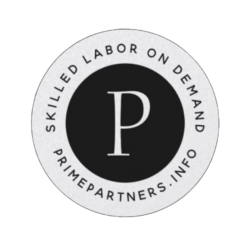Raised Floor Installer Interview Preparation
Overview of Required and Recommended Qualifications
Certifications
- Required:
- OSHA 10 or 30-hour Construction Safety Certification: Essential for understanding and maintaining safety standards on site.
- First Aid/CPR Certification: Important for handling emergencies on the job site.
- Recommended:
- Certified Installation Manager (CIM): From the Flooring Contractors Association, this certification can enhance a candidate’s understanding of project management and installation processes.
- Raised Access Floor Installation Certification: Some manufacturers or industry bodies offer specialized training and certification in raised floor systems.
Educational Background
- High School Diploma or GED: Minimum requirement for most entry-level positions.
- Technical School or Apprenticeship Program: Courses in construction, carpentry, or a related field can provide foundational skills.
Industry Qualifications
- Experience with Raised Floor Systems: Hands-on experience with different types of raised floor installations is highly beneficial.
- Knowledge of Building Codes and Standards: Familiarity with local and national building codes related to flooring and construction.
Interview Questions and Answers
Technical Questions
What are the primary components of a raised floor system, and how do they function together?
-
Answer:
- Components: Panels, pedestals, stringers, and finishes.
- Function:
- Panels are supported by a grid of pedestals that allow for height adjustment.
- Stringers can be used to provide additional support and stability.
- Finishes such as carpet, tile, or laminate are applied over panels for aesthetics and functionality.
- Example: In a data center, a raised floor system allows for efficient cable management and cooling. The panels are easily removable, providing access to the underlying infrastructure.
-
Pitfalls to Avoid:
- Incorrect panel alignment can lead to instability.
- Not accounting for weight load can result in floor failure.
-
Follow-up Points:
- Discuss the types of materials used for panels and their benefits (e.g., steel vs. wood-core).
- Explain how to adapt the installation for different environments like data centers or office spaces.
How would you address a situation where a raised floor panel is not fitting correctly?
-
Answer:
- Initial Steps:
- Assess the Panel and Pedestal Alignment: Ensure all components are level and correctly aligned.
- Check for Debris or Obstructions: Clear out any debris that might be causing the misalignment.
- Adjustment Techniques:
- Re-level the Pedestal: Use a leveling tool to adjust the pedestal height.
- Replace or Trim Panels: If a panel is damaged or incorrect, it may need to be replaced or trimmed to fit.
- Example: In a recent project, the misalignment was due to a manufacturing defect in the panel. After confirming with the supplier, the panel was replaced, and the installation proceeded smoothly.
- Initial Steps:
-
Pitfalls to Avoid:
- Forcing a panel into place can damage it and affect structural integrity.
- Ignoring the issue can lead to further complications down the line.
-
Follow-up Points:
- Discuss the importance of quality checks for materials upon delivery.
- Explain how to handle communication with suppliers regarding defective materials.
Behavioral Questions
Describe a time when you had to work under pressure to complete a project on time. How did you manage it?
-
Answer:
- Situation: During a project installation at a corporate office, the timeline was shortened due to client requirements.
- Action: Prioritized tasks by focusing on critical areas first, coordinated with team members to work in shifts, and communicated progress regularly with the client.
- Outcome: Completed the project ahead of the revised deadline, resulting in positive client feedback and a subsequent contract for another floor.
-
Pitfalls to Avoid:
- Sacrificing quality for speed can lead to unsatisfactory results.
- Poor communication with the team can create confusion and errors.
-
Follow-up Points:
- Discuss how to balance quality and efficiency.
- Explain strategies for effective team communication in high-pressure scenarios.
How do you handle conflicts with team members on a project?
-
Answer:
- Approach:
- Listen Actively: Understand each team member’s perspective.
- Facilitate Open Discussion: Encourage open communication to resolve misunderstandings.
- Seek Common Ground: Find mutually acceptable solutions.
- Example: During a project, a disagreement arose over the installation sequence. By organizing a team meeting, we were able to align on a practical approach that satisfied both parties.
- Approach:
-
Pitfalls to Avoid:
- Ignoring conflicts can lead to a toxic work environment.
- Taking sides without understanding can exacerbate the issue.
-
Follow-up Points:
- Describe the importance of maintaining professionalism.
- Discuss techniques for preventing conflicts, such as clear role definitions.
Situational Questions
A client expresses dissatisfaction with the progress of the installation. How do you address their concerns?
-
Answer:
- Listen and Acknowledge: Give the client an opportunity to voice their concerns fully.
- Provide a Detailed Update: Share the current status, challenges faced, and steps being taken to address them.
- Action Plan: Develop a revised timeline and strategy to get back on track, keeping the client informed throughout the process.
- Example: On a commercial project, delays were caused by supply chain issues. By keeping the client informed and adjusting the schedule, we were able to complete the work with minimal disruption.
-
Pitfalls to Avoid:
- Being defensive can escalate the situation.
- Overpromising on timelines can lead to further dissatisfaction.
-
Follow-up Points:
- Discuss strategies for proactive communication to avoid client dissatisfaction.
- Explain how to set realistic expectations from the outset.
Imagine you find a discrepancy between the project plans and actual site conditions. What steps would you take?
-
Answer:
- Verify the Discrepancy: Double-check measurements against the plans to confirm the issue.
- Consult with the Project Team: Discuss with architects or designers to understand the intent and possible adjustments.
- Propose Practical Solutions: Suggest viable alternatives that align with the project goals.
- Example: On receiving plans that didn’t account for existing HVAC systems, we coordinated with the design team to modify the pedestal heights, ensuring proper airflow and compliance with building codes.
-
Pitfalls to Avoid:
- Proceeding without clarification can lead to costly errors.
- Failing to document changes can cause confusion later.
-
Follow-up Points:
- Explain the importance of keeping thorough records of any plan changes.
- Discuss how to incorporate feedback from all stakeholders in the revised plan.
Problem-Solving Questions
How would you handle a scenario where unexpected site conditions prevent you from following the planned installation method?
-
Answer:
- Assess the Conditions: Identify the specific issues preventing the original method.
- Explore Alternatives: Consider different installation techniques or materials that could be used.
- Consult with Experts: If necessary, seek advice from structural engineers or experienced installers.
- Execute the Solution: Implement the chosen method while documenting the process and rationale.
- Example: In a basement installation, unexpected moisture required the use of moisture-resistant panels and sealants. This was implemented after consulting with experts, ensuring durability and client satisfaction.
-
Pitfalls to Avoid:
- Ignoring the conditions can compromise the installation’s integrity.
- Making changes without consulting necessary stakeholders can lead to project misalignment.
-
Follow-up Points:
- Discuss risk assessment strategies prior to installation.
- Explain how to ensure compliance with safety and building codes when adapting methods.
Describe a time when you identified a potential safety hazard during an installation. What actions did you take?
-
Answer:
- Identify the Hazard: During an installation, noticed unstable pedestals due to uneven subflooring.
- Immediate Actions: Halted installation in the affected area to prevent accidents.
- Corrective Measures: Leveled the subfloor and reinforced pedestals before resuming work.
- Outcome: The prompt action ensured a safe work environment and prevented potential injuries.
-
Pitfalls to Avoid:
- Ignoring hazards can lead to accidents and liability issues.
- Not communicating hazards to the team can endanger others.
-
Follow-up Points:
- Discuss the importance of regular safety audits.
- Explain how to foster a culture of safety awareness among team members.
More Infrastructure & Cooling Interview Guides
Explore more interview guides for Data Center positions.
Raised Floor Installer Interview Preparation
This guide equips job seekers with essential insights and strategies for excelling in a raised floor installer interv...
Data Center HVAC Technician Interview Preparation
This guide prepares job seekers for a Data Center HVAC Technician interview by focusing on key areas such as understa...
Environmental Monitoring Specialist Interview Preparation
This guide prepares job seekers for an Environmental Monitoring Specialist interview by covering key topics such as d...
Cooling System Engineer Interview Questions and Answers
This guide provides a comprehensive collection of interview questions and answers tailored for Cooling System Enginee...
Precision Cooling Technician Interview Questions and Answers
This guide provides job seekers with a comprehensive set of Precision Cooling Technician interview questions and answ...
Recent Articles
Check out more articles from Best Electrician Jobs about getting hired inthe electrical industry.
Best Job Board for Electricians
Discover the best job board for electricians! Boost your career with insights on salaries, training, and growth!
Improve Your Electrician Job Postings for More Applicants
Discover how to improve your electrician job postings for more applicants! Boost your career with insights on salarie...
What is the Highest Paying Electrician Role?
Discover the highest paying electrician roles and how to prepare for them. Learn about the skills and certifications ...
Industrial Electrician Careers in California
From manufacturing plants to data centers, industrial electricians play a vital role in California's economy. Discove...
Security Technician Interview Questions and Answers
Security technicians are essential in protecting our modern world. Learn what to expect in your Security Technician i...
Featured Jobs
-

- Company
- Prime Partners
- Title and Location
- Cable Technician
- Wyoming, MI
- Employment Type
- FULL_TIME
- Salary
- $25.16-$32.59/HOUR
- Team and Date
- Commercial
- Posted: 04/17/2025
-

- Company
- Prime Partners
- Title and Location
- Apprentice Electrician
- San Diego, CA
- Employment Type
- FULL_TIME
- Salary
- $24-$37/HOUR
- Team and Date
- Commercial
- Posted: 04/17/2025
-

- Company
- Prime Partners
- Title and Location
- Security Alarm Installer
- Mesa, AZ
- Employment Type
- FULL_TIME
- Salary
- $25.81-$30.68/HOUR
- Team and Date
- Commercial
- Posted: 04/17/2025
-
- Company
- Jackson Healthcare
- Title and Location
- Journeyman Electrician
- Alpharetta, GA
- Employment Type
- FULL_TIME
- Salary
- $30.6-$35.86/HOUR
- Team and Date
- Commercial
- Posted: 04/17/2025
-

- Company
- Prime Partners
- Title and Location
- Journeyman Electrician
- Gilbert, AZ
- Employment Type
- FULL_TIME
- Salary
- $40-$55/HOUR
- Team and Date
- Data Center
- Posted: 04/17/2025
-

- Company
- Prime Partners
- Title and Location
- Voice & Data Technician
- Glendale, AZ
- Employment Type
- FULL_TIME
- Salary
- $23-$35/HOUR
- Team and Date
- Commercial
- Posted: 04/17/2025
Best Electrician Jobs
Ready to get started?
Stop worring about manpower. And get back to what you do best.
Best Electrician Jobs is for Everyone
At Best Electrician Jobs, we are dedicated to fostering an inclusive environment that values diverse perspectives, ideas, and backgrounds. We strive to ensure equal employment opportunities for all applicants and employees. Our commitment is to prevent discrimination based on any protected characteristic, including race, color, ancestry, national origin, religion, creed, age, disability (mental and physical), sex, gender, sexual orientation, gender identity, gender expression, medical condition, genetic information, family care or medical leave status, marital status, domestic partner status, and military and veteran status.
We uphold all characteristics protected by US federal, state, or local laws, as well as the laws of the country or jurisdiction where you work.
 Best Electrician Jobs
Best Electrician Jobs